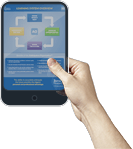Disruption is a central component of the Anticipatory Organization Model, focusing closely on how Anticipatory Organizations and individuals can look at disruption and see enormous opportunities.
The untimely situation we currently face with COVID-19 is no exception; not only has every industry been touched by the coronavirus pandemic and subsequent lockdown, every country has. There is literally no safe haven from this disease, and businesses both large and small have found themselves in a predicament unlike ever before.
However, much like they do with digital disruption, Anticipatory Leaders leverage disruption of any kind by way of realigning their focus and, especially in the case of the COVID-19 pandemic, develop a new product or service to benefit humankind or to help wage war on this terrible illness.
Being an Anticipatory Leader during this crisis allows you to anticipate what’s to come and thus not have to wait for the next big disruption to innovate and transform your industry. Traditionally, there are three common reasons industries get stuck, and during a global pandemic, these still prove to be obstacles.
1. Stagnation
You may have felt a strong sense of growth before the COVID-19 pandemic; however, once lockdowns were put in place, that positivity about the future was greatly challenged, possibly sending you and your organization into stagnation.
I implore you to continue to innovate and become an Anticipatory Organization during all of this. Resting on your laurels rarely works during conventional times, and it will surely be trouble during uncertain times. Let’s say you own a screen printing company that was deemed nonessential. How can you still push innovation in the face of uncertainty and become a positive disruptor in your industry during a lockdown?
2. Customer Frustration
The message is clear: We are all uncomfortable being locked down, disallowed to visit our favorite restaurant or partake in our usual gym routine. Many customers will feel like canceling their memberships out of frustration and distancing themselves from their favorite establishments, so you must find a way to engage them. We are all in this together; observe your customers’ behavior and create opportunities via a way to still serve them, even with your doors closed.
Don’t focus on the obstacles of being shut down; focus on how you can innovate and still serve your loyal customer base despite having to close. For example, think of how a self-defense gym can continue to host daily classes remotely via Zoom to keep their members engaged and satisfied.
3. Slow-to-Launch Products
With now being a better time than any to pay attention to the Hard Trends, separating them from the Soft Trends, and becoming Anticipatory in order to continue innovation in a time possibly void of progress, if you have identified a product or service that can help the world, don’t dawdle.
Be sure to reassign your workforce, employees, or coworkers to focus on said product or service exclusively to get it out now rather than later. An example: A company that hosts 5K fun runs that needed to shut down all its spring and summer events might create an app that allows individuals to compete in a “remote 5K” by logging in and still participating in a 5K. Doing this would allow the company to still host the event in some way, whereas if it delayed or ignored this opportunity, someone else will heed it.
Industries That Are Experiencing Disruption
Want to know some specific industries where this global pandemic has created obvious opportunities for disruption and possibly paved the way for a more cost-effective and efficient future in them? Here are three that come to mind:
- Sports Entertainment. Prior to COVID-19, there was already a boom of esports, with everything from basketball to racing, so will this pandemic be the final disruptive straw to push the sports industry over the edge to where esports officially becomes the new mainstay of tomorrow? Or better yet, will “crowd-less” games and races become a more cost-effective way to run things?
- Real Estate. One indisputable fact of this pandemic is that working remotely is possible, cuts down on pollution, and saves companies money by cutting down on office space. Realtors already work remotely, but how do they show homes remotely? There have already been some virtual tours accomplished with the use of Virtual Reality (VR); will this be the new way of seeing a home after all this?
- Higher Education. Many professors I’ve spoken to since the start of the global pandemic have quickly converted to online teaching by using Zoom and other video media. Several colleges are completely online; however, even more are not. Will this be the push to use more affordable, online education technology to cut down on student debt?
Take a few minutes to consider your industry (or one that interests you)—are there opportunities and a need for positive disruption during this pandemic?







Comments